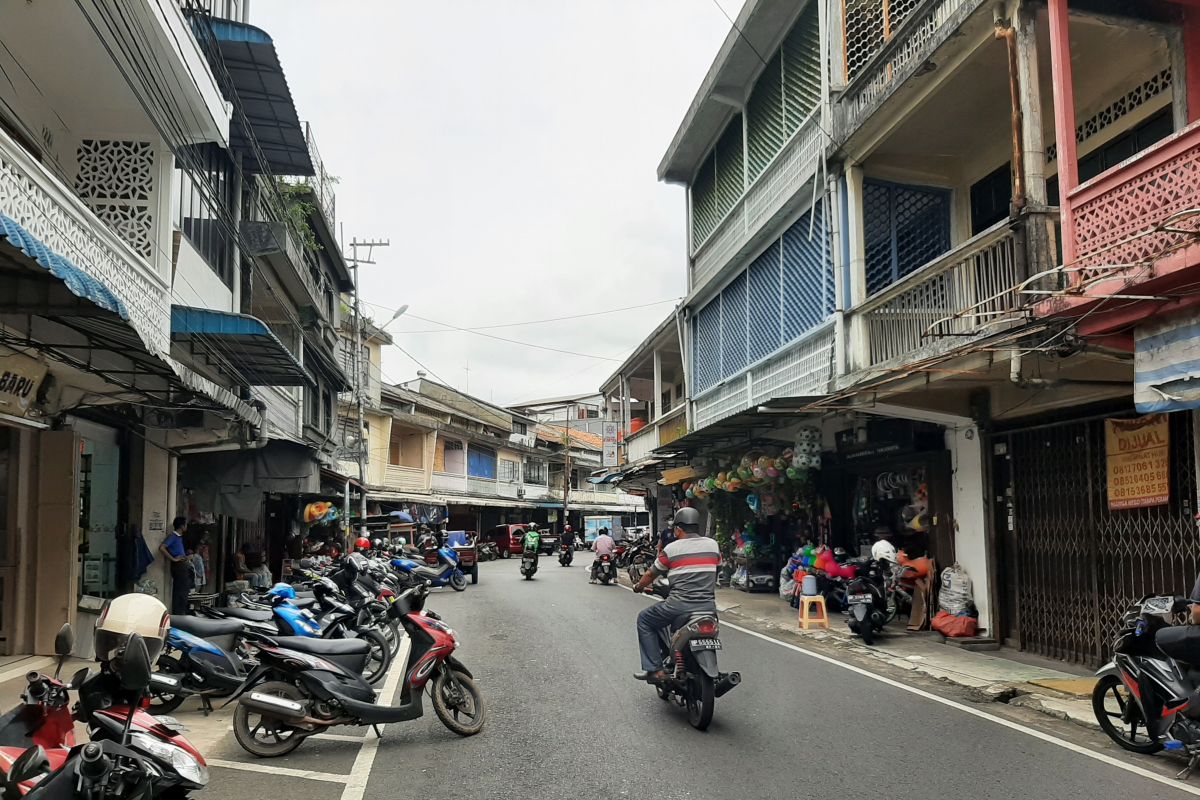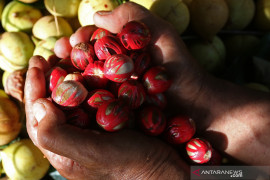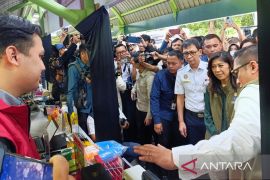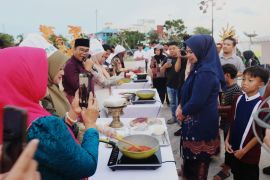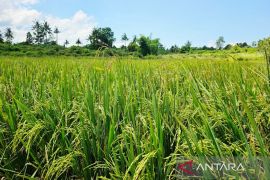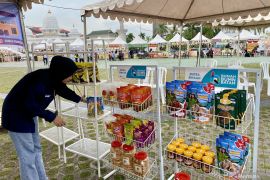The glory of gambir can be traced back to the days of the Sultanate of Johor-Riau-Pahang-Lingga, which was centered on the Port of Hulu Riau (Carang River). Now, the area has become the administrative region of Tanjungpinang city.
The Hulu Riau Port was a transit port that connected the western and eastern worlds, according to Indonesian Historiography, quoted by the Kemdikbud.go.id/bpnbkepri/ website.
Spices like pepper and gambir were exported from the port, the website states.
Merchant ships from Java, Sulawesi, and Malay and foreign kingdoms, such as Siam, China, Persia, Arabia, Portugal, the Netherlands, England, and France docked and traded there, it adds.
When the trade center shifted from Hulu Riau Port to Sri Bintan Pura Port of Pelantar Tanjungpinang around the 17th century, gambir remained an important export commodity for Riau Islands, it says.
At the time, West Sumatra was claimed to be the largest supplier of gambir in the archipelago and the world, accounting for 80 percent of the supply. However, gambir produced by Riau Islands was also shipped to Bangladesh, India, Pakistan, Taiwan, Japan, South Korea, France, and Switzerland, according to the website.
Gambir was a promising export commodity for Riau Islands in the 1820-1830s. In 1824, Riau Islands exported 48,600 piculs (equivalent to 62.5 kilograms) of gambir. In 1832, the province's exports crossed 80 thousand piculs.
Origins
According to Riau Islands chronicler, Anastasia Wiwik Swastiwi, one of the official written sources on gambir in Riau Islands is the book Tuhfat Al-Nafis, penned by litterateur Raja Ali Haji.
The book describes how gambir was first brought from Sumatra in 1743, during the reign of Yang Dipertuan Muda (Prince) of Riau II Daeng Celak. He sent Punggawa Tarung and Penghulu Jedun to obtain gambir seeds from Perca Island or Sumatra.
Then, gambir seedlings were planted from Bintan Island to Batam Island.
Another valid source is a collection of ancient Malay manuscripts, Swastiwi informed. Quoting a passage from the manuscript she said: "Those who go to Cembul island and Bulang (Batam) and will (plant or trade) pepper and gambir in my land, do not cause turmoil."
Swastiwi revealed that when gambir seeds were first planted on Bintan Island, thousands of workers were brought directly from China to plant them in gardens owned by the Bugis and Malay nobles.
The workers were stationed in the Senggarang area of Tanjungpinang, she said.
However when Sultan Mahmud Riayat Shah (Sultan of Johor-Riau-Pahang-Lingga) moved the kingdom's principality to Daik, Lingga in 1787, the Chinese residents did not move, she informed.
They chose to stay on Bintan Island and cultivate their own gambir plants, she said. They progressed from planting it, processing it, to selling it to become gambir masters, she added.
As a result, now there is a large Chinese population descended from the workers residing in Senggarang, Swastiwi noted. This is proved by the existence of Chinatown or Chinese villages, with the majority of residents living in coastal areas, she said.
In Senggarang there once stood a gambir warehouse belonging to a Chinese gambir trader named Ling Sing She. He passed away long ago, but his descendants are still alive and have settled in Tanjungpinang.
Senggarang community leader Jo Seng (71) claims to have witnessed how the gambir business was conducted by Ling Sing She at that time. In fact, Jo Seng's house is not far from the warehouse.
According to him, Ling Sing She planted gambir in Engkang Anculai, Bintan district. Once it was ready to be processed, it was shipped using a gambir seine to the Senggarang platform, he said. Gambir was then stored at the warehouse, he added.
"Every day he dried gambir on a wooden platform without any layers. After drying, it was sold to gambir masters," Jo Seng said at his residence in Senggarang on Tuesday.
However, since a century ago, gambir warehouses have become rare.
Today, the word "gambir" only brings to mind a road in Tanjungpinang. The road itself was a gambir trade center between farmers and masters whose ethnicity ranged from Chinese to Javanese.
Golden age to decline
In 1850, gambir was not sold based on its weight but piece by piece, according to historical researcher at the Cultural Value Preservation Center (BPNB) in Riau Islands, Dedi Arman.
The price of 10 thousand cuts of gambir was 5 Spanish dollars, he added.
In the archives of the Political Report of Riau, in 1860, the gambir trade also brought prosperity to Tanjungpinang, he said. It was witnessed on paved roads as well as renovated, beautiful houses and temples of the Chinese community, he added.
However, in the 20th-century, the gambir business in Riau Islands slowly began to decline. One of the factors was a fall in global demand, which caused gambir prices to plummet, he observed.
The expansion of gambir plantations also worsened the environmental damage, he pointed out. Gambir processing requires wood for burning, which triggered massive deforestation, he said.
Gambir business was no longer feasible because the operational costs were quite high and the revenues could not cover the expenses, he said. Plus, its production required a lot of labor, he remarked.
"Finally, one by one the gambir businesses closed," Arman said.
Benefits of gambir
As gambir is considered to have myriad benefits, its sap is often extracted for use by the Riau Islands people and the global pharmaceutical industry.
In the past, rural residents of the Riau Islands used gambir for nginang or nyirih, a local practice that involves chewing combinations of spices for good health.
As it can also make breath fragrant, gambir is used as a topical medicine for toddlers' gums.
Riau's gambir is known for its quality because of its high tannin content. The difference is in the leaves of the plant grown here. Gambir of "shrimp" type has more advantages than other types. This type has more leaves and produces more sap.
Thanks to its tannin content, gambir can even prevent diarrhea. It also can be utilized to antidote alcohol and metal toxins.
Restoring gambir's glory
Swastiwi urged the Riau Islands administration to re-plant gambir on vacant land.
This needs to be the main focus for the local administration, rather than other agricultural commodities that have never been tested successfully, she affirmed.
Planting gambir needs to be followed by socialization about its utilization and supported by large market uptake, she said.
However, the obstacle of selling gambir today is that its market demand has tended to fall, she added.
The uses of gambir also need to be reviewed, she noted. The use of the plant should be bolstered for certain innovative products, so its ecosystem can be maintained, she said.
For example, she pointed out, the use of gambir in clothing dyes is no longer promising because there are many other cheaper and easy-to-find products in the market.
There is no reason for the government and Riau Islands residents to not re-explore gambir's past glory for future prosperity, she remarked.
Editor: Suharto
Copyright © ANTARA 2021
